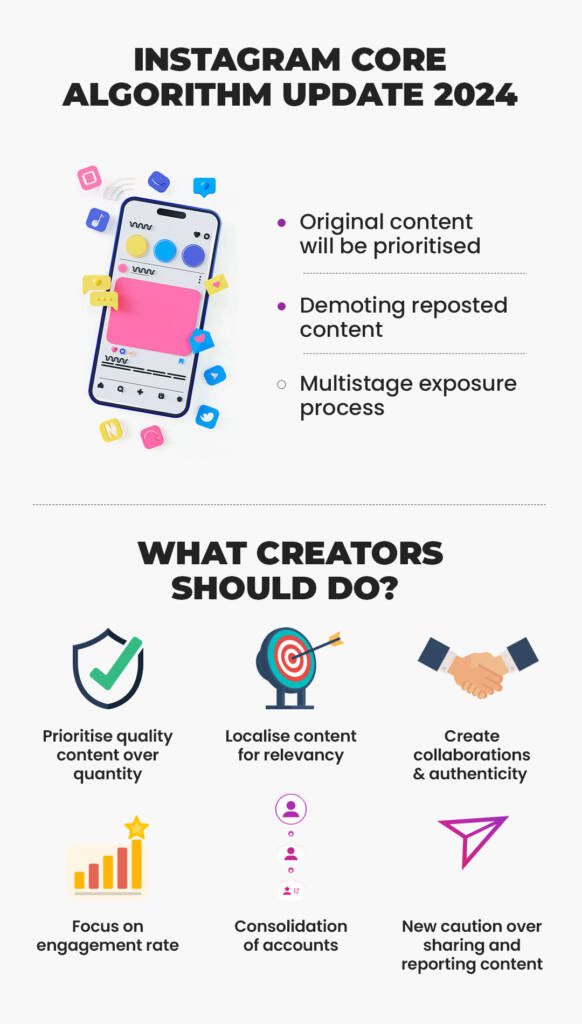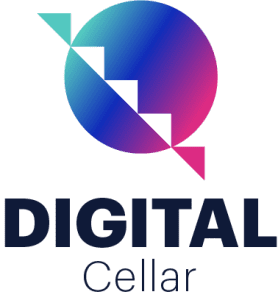In the vast ocean of digital content, the currents of creativity and imitation often collide. As the tide of social media swells, so too does the flood of content, challenging the boundaries of authenticity and intellectual property.
Instagram, a beacon in the realm of visual storytelling, has announced critical algorithmic updates designed to shield the original content creators and cast aside duplicates or copycats. This discussion delves into these pivotal updates, their deployment, and the resultant waves across the digital content ecosystem.
A Closer Look at Instagram’s Challenges in The Content Ecosystem
Instagram has long been a dominant player in the social media landscape, praised for its intuitive design and strong focus on visual content. Historically, the platform’s algorithms have revolved around engagement metrics such as likes, comments, and shares. This model has supported a dynamic environment where highly engaging content, regardless of its originality, often receives prominent visibility.
Here are some of the key past challenges:
Repost Dominance
Viral images or videos often saw higher circulation through reposts by large meme pages or content aggregators, leaving original creators without proper recognition. For instance, a creative makeup tutorial could be widely shared across various accounts, with the original artist losing visibility amidst the reposts.
Let’s take a look at a real-world case example for this challenge:
Fenty Beauty, founded by singer Rihanna, took the makeup industry by storm in 2017 with its diverse range of foundation shades catering to a wider range of skin tones. It heavily invested in creating high-quality makeup tutorials and promotional content featuring talented makeup artists.
However, they soon encountered the phenomenon of “repost dominance.” Large meme pages and content aggregators, often with millions of followers, began reposting Fenty Beauty’s content (particularly creative makeup tutorials) without crediting the original artist. This resulted in:
- Reduced Visibility
The original makeup artist, who invested time and creativity into the content, lost significant visibility. Their name and brand might not be readily apparent amongst the reposts. - Loss of Recognition
Viewers of the reposted content might not be aware of the original creator, potentially hindering audience connection and future engagement. - Potential for Misinformation
Reposts might lack context or contain edits that could misrepresent the original artist’s work or techniques.
Trending Content Saturation
Trends such as “Ice Bucket Challenge” or “Mannequin Challenge” demonstrated how original content creators could be lost in the flood of participants, with derivative posts often gaining more traction than the original.
Here is an example of this challenge:
In 2019, a country rap song titled “Old Town Road” by Lil Nas X featuring Billy Ray Cyrus became a massive hit. The song’s catchy melody and genre-bending style sparked a global phenomenon.
Naturally, the internet exploded with countless remixes of “Old Town Road.” Musicians, celebrities, and even brands created their own versions, often adding unique twists or parodies. The original song became a canvas for endless creativity. Remixes with new lyrics, different genres, and even international versions flooded social media. The focus shifted to the ever-evolving remixes, not just the original song.
Lil Nas X, the originator, did benefit from the trend. His name remained attached to the song, and he gained immense recognition. However, the sheer volume and variety of remixes sometimes overshadowed the original version itself, shifting the focus, for many, to the most creative or humorous remixes.
Algorithmic Innovations and Their Mechanisms

In response to these issues, Adam Mosseri announced a shift towards a more equitable and creative-friendly platform. The revised algorithms aim to recognise and prioritise original content, ensuring that creators receive the credit and visibility they deserve. This shift is not just a technical update but a strategic move towards redefining the platform’s values around content creation and distribution.
Prioritising Original Content
This seems to be the core focus of the updates. Instagram aims to elevate content that is demonstrably unique and originates with the user posting it. This could involve:
- Text posts with original ideas or stories.
- Photos and videos showcasing the user’s own creativity or perspective.
- Live streams or Reels featuring original content or performances.
It’s not entirely clear how originality will be determined by the algorithm, but focusing on creating unique content is the best approach for creators.
Demoting Reposts
Reposted content, especially those without proper credit to the original creator, might see a decrease in visibility. This discourages accounts that solely rely on sharing others’ work and here is what we might see in the future on Instagram:
- Lower placement of reposts in user feeds and recommendations.
- Reduced reach for accounts that primarily rely on reposting.
The updated algorithm reduces the reach of influencers who rely heavily on reposts or aggregated content, emphasising the need for originality. Influencers must adapt by creating more authentic, unique content to maintain their influence and effectiveness.
However, the extent of this demotion is unclear. Reposts with clear credit or those adding commentary/transformation might be less affected.
Multistage Exposure Process
Content now undergoes a tiered exposure process, initially reaching a small audience matched based on predicted interest. Depending on the engagement in this phase, the content may then be exposed to a wider audience, emulating a merit-based system that rewards content that resonates well with its initial audience.
Instagram Algorithm As A Game Changer For Reels
Extended Video Lengths
Instagram’s introduction of longer video formats, including up to 60 minutes for Instagram Video and up to 3 minutes for Reels, reflects its strategy to keep users engaged longer and provide more flexibility for content creators. This shift is part of Instagram’s broader effort to compete with TikTok’s engaging short-form videos and YouTube’s extensive content library.
Enhancing Content Strategy
Marketers and content creators need to leverage these longer formats effectively by incorporating more detailed storytelling, episodic content, or in-depth explorations of topics. These approaches can significantly enhance user engagement and time spent on the platform.
Educational and ‘Edutainment’ Content
The shift towards longer video formats opens opportunities for educational and ‘edutainment’ content, which blends entertainment with informative content. This type of content can help brands and creators establish authority, build a loyal audience, and offer significant value to viewers.
What Does This Mean For Content Creators?
For content creators navigating the evolving seas of Instagram’s algorithm, the implications are profound and transformative. These recent algorithmic changes signify a shift towards valuing and protecting originality, drastically impacting how creators approach content production.
Strategic Shifts
The call for originality is loud and clear. Creators must now pivot from quantity to quality, focusing on crafting content that not only engages but resonates with their targeted demographic.
Emerging brands should explore innovative content formats such as interactive stories, behind-the-scenes content, or live sessions. These formats can captivate the audience and reflect the brand’s unique perspective, enhancing engagement and building a loyal follower base.
Localised Content
The updated algorithm for deprioritising reposted content necessitates a more localised content strategy. Each location must now focus on creating unique content that resonates with the local audience, such as highlighting specific local events, promotions, or community activities. sharing identical content across various accounts was a common practice to maintain brand consistency.
Collaborations and Authenticity
Collaborative efforts are now more valuable than ever, providing a method for creators to expand their reach and authenticity. These partnerships need to be strategic, aiming to combine distinct creative voices in a manner that emphasises originality.
Customisation for Engagement
Tailoring content to specific locations enhances engagement by directly addressing the local tastes and interests of the audience. This approach not only aligns with the new algorithm requirements but also boosts the posts’ relevance and impact, fostering a stronger connection with the local community.
The algorithmic shift offers a significant advantage to nano and micro-influencers known for their original and engaging content. These influencers tend to have a strong connection with their audience, providing brands with opportunities for more targeted and effective collaborations. Engaging with these smaller influencers can lead to higher engagement rates and more genuine brand-influencer audience interaction.
Consolidation of Accounts
For franchises and brands with multiple locations, consolidating multiple accounts into a single national or global account might be advantageous. This strategy simplifies content management and ensures a unified brand message across all platforms. Highlighting exceptional local content on a central account can showcase the diversity and uniqueness of each location while adhering to the algorithm’s preference for originality.
Sharing and Reporting Content
In the new algorithmic landscape, brands must carefully consider their reposting strategies. Sharing content across accounts, especially when it involves high-quality, original posts from local branches or partners, should be done thoughtfully.
Brands should ensure that reposts add value to their followers and reflect the brand’s ethos. Moreover, businesses should be cautious about reporting user-generated content that features their products, as fostering a community that creates and shares brand-related content can be beneficial.
Comparative Analysis with Other Platforms
This segment explores how Instagram’s fresh policies measure against platforms like TikTok and YouTube, each wrestling with content originality and creator incentives. Instagram’s unique stance against content aggregators might just set the course for future online content management.
As Michael Shareef, the Founder and Head of Digital at The Digital Cellar and a seasoned AI developer for platforms like Facebook, I have witnessed firsthand the profound impacts of algorithmic changes in social media landscapes.
The recent shift in Instagram’s algorithm is a pivotal moment that mirrors earlier transformations on Facebook, particularly the changes affecting the visibility of Pages content. This new emphasis on originality and authenticity in Instagram’s algorithm marks a decisive shift towards fostering genuine user engagement, much like Facebook’s historical updates that prioritised meaningful interactions over broad content distribution.
This algorithmic evolution on Instagram is set to redefine how content is consumed and delivered, emphasising the importance of authentic, original, and educational content. Just as Facebook once recalibrated its focus to enhance user interaction with brand and business content, Instagram is now sharpening its focus on discovery. This is a significant shift that will require brands to innovate vigorously to compete with user-generated content (UGC) creators. Large content aggregators that have historically thrived on recycled content will need to rethink their strategies as the landscape evolves to favour originality.
For brands, the strategy should no longer rely on static content calendars or rigid content pillars that fail to adapt to rapidly changing trends. Instead, the most impactful investment a brand can make today is in robust social listening tools. These tools are crucial for identifying and adapting to emerging trends, enabling brands to collaborate with audiences in real time to co-create content that resonates and engages. The future of successful digital strategy lies in a brand’s ability to not just follow trends but to understand and influence what genuinely inspires and activates its audience. This approach doesn’t just capture attention, it engages audiences in a way that transforms them into advocates and extensions of the marketing team, creating a dynamic and participatory brand experience.
Potential Challenges and Critiques
Algorithm Transparency
One of the primary concerns with Instagram’s updated algorithm is the lack of transparency regarding how it determines “originality.” Without clear visibility into the criteria and processes used, there is a risk that the algorithm might not accurately identify the true originators of content. This opacity can lead to several issues:
Bias and Misidentification
The algorithm might favour certain types of content or creators based on undisclosed factors, potentially leading to a biased distribution of visibility. For example, it could prefer content that fits a particular aesthetic or format more commonly seen in popular accounts, thereby sidelining niche or unconventional creators.
Errors in Content Attribution
There’s also the risk of errors in automatically identifying the original source of content. Complex software might mistakenly attribute originality to a more popular repost rather than the true original, especially if the initial post did not garner significant engagement.
Impact on Small Creators
While the algorithm updates are intended to level the playing field for creators, there are concerns that they might inadvertently favour well-established creators over newcomers or those with smaller followings. This could occur due to several factors:
Resource Disparity
Established creators often have more resources to produce high-quality, engaging content that aligns well with the algorithm’s preferences for originality and engagement. In contrast, smaller creators might struggle to meet these standards due to limited budgets or access to professional tools.
Initial Visibility Challenges
The new multistage exposure process could pose challenges for small creators. If their content does not perform well in the initial limited exposure phase due to a smaller inherent audience, it might not reach the broader exposure it deserves, thus stifling its potential to go viral.
Wrapping Up: Managing Instagram’s In The Future
Instagram’s latest updates herald a transformative shift towards authenticity and originality, crucial for maintaining visibility and engagement. By prioritising quality and strategic innovation, brands and influencers can thrive in a fiercely competitive digital arena.
This focus not only aligns with current trends but also prepares them for future shifts in the dynamic social media landscape. Mastering the new algorithm involves strategic planning, creative content production, and a nuanced understanding of audience engagement, enabling stakeholders to enhance their online presence and forge deeper connections with their audiences.

